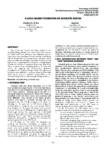
|
A Logic-Based Foundation of Axiomatic Design
Lu, Stephen C.-Y., Ang Liu
6th International Conference on Axiomatic Design, 2011
One of the most essential and unique features of the Axiomatic Design Theory is its clear differentiation between the “what” and “how” decisions. This delineation sets the origin for realization and specialization procedures, and, along with the domain and layer concepts respectively, constitutes a unique two-dimensional design framework. Based on formal logic studies, this paper presents a theoretical underpinning to elucidate the fundamental reasons for delineating “what” from “how” decisions, hence providing guidance to justify and execute the mapping and decomposition operations prescribed by the Axiomatic Design Theory. This logic-based foundation also establishes a synthesis reasoning framework which can be seen as a theoretical generalization of the Axiomatic Design Theory to better support design synthesis.
|
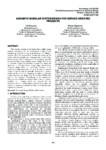
|
Axiomatic Modular System Design for Service-Oriented Products
Stiassnie, Eli, Moshe Shpitalni
6th International Conference on Axiomatic Design, 2011
The business solution to the three-sided conflict among industry, customers and the environment is based upon transitioning from the selling of products to the selling of services, while the manufacturer remains the owner of the product and is responsible for it throughout its lifecycle. A key to the success of such a transition is the concept of extended maintenance based upon modular product design. With the aid of axiomatic design, the product’s concept can already be optimized at the preliminary design stage. Furthermore, axiomatic design leads to a substantial decrease in the product’s concept complexity, that is, in the core of modular design. A system that automatically modularizes a product design can be realized by integrating principles of axiomatic design with two new design structure matrices (DSM). The goal of the proposed methodology is to automatically determine the number of modules and to identify product modules in a design, which are essential for the implementation of a module-based product-service plan. An example of automatic modularization for the design of a water dispenser is presented.
|
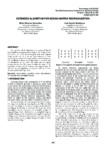
|
Extended Algorithm For Design-Matrix Reorganization
Benavides, Efrén Moreno, Luis García Rodríguez
6th International Conference on Axiomatic Design, 2011
An algorithm, which is based on an extension of Nam P. Suh’s algorithm, is proposed to reorganize the design matrix. The results are 1) the lowest-triangular and most diagonal design matrix and 2) a set of extra columns or rows depending on whether the design problem is redundant or not. The modification allows the reorganization of matrices with any distribution of Xs inside and works with rectangular matrices of any size. This paper describes the steps of the procedure and gives several examples of reorganization. In addition, the new algorithm is compared with the T. Lee, Acclaro, and N.P Suh algorithms.
|
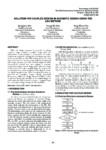
|
Solution for Coupled Design in Axiomatic Design Using the Ldu Method
Ahn, Jeonghun, Young Ho Kim, Sung Woon Cha
6th International Conference on Axiomatic Design, 2011
When the design processes is executed, an existing axiomatic design becomes a coupled design when the Independence Axiom (Axiom 1) is unsatisfied. If needed, designers are supposed to redesign from the beginning, which can be very troublesome. The LDU method, presented in this paper, is an easy way to revise design problems and proceed with design processes. The LDU method adopts the LDU decomposition method from linear algebra in axiomatic design, which is applied to the design matrix. When the design matrix is determined to be a coupled design, the design matrix is decomposed into a lower triangular matrix, diagonal matrix, and upper triangular matrix. These decomposed matrices are converted to decoupled designs through Functional Requirements (FRs*) and Design Parameters (DPs*), which are obtained by the FRs and DPs of the coupled design. In order words, the LDU method can convert a coupled design into an uncoupled design through the FRs* and DPs*.
|
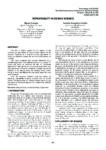
|
Repeatability in Design Science
Cavique, Miguel, Antonio Goncalves-Coelho
6th International Conference on Axiomatic Design, 2011
The laws of natural science do not depend on the observer, but applications of design science depend on the designer. Therefore, it is usual to say that applications in design are subjective whereas the laws of natural science are objective. This paper compares the asserted objectivity of a scientific experiment to the alleged subjectivity of a design. To discuss this issue, we introduce the idea of “functional repeatability” that applies to both natural experiments and design processes. In fact, if one defines a certain target to be achieved by two designs teams, the resulting design objects would be most likely different but they might repeat the same set of functions.
|
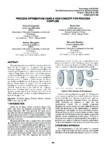
|
Process Optimization Using a New Concept for Process Coupling
Campatelli, Gianni, Paolo Citti, Andrea Meneghin, Riccardo Barbieri
6th International Conference on Axiomatic Design, 2011
This paper presents a new model for process optimization based on the evaluation of the process coupling using Axiomatic Design (AD). The model developed allows the evaluation of the efficiency of a process thanks to the use of a Process Design Matrix. This matrix links the basic process activities considering them as elements of an oriented graph. The result is the capability to evaluate the mean number of iterations needed to produce a product/service, the related cost and the overall efficiency of the process. Moreover, if the Process Design Matrix is merged with the information regarding the resources needed for each process phase, it could be used to simplify the definition of a Material Requirement Planning system for the process itself. This approach has been applied to an industrial case study and the ad-hoc MRP software has been developed starting from the input of this application.
|
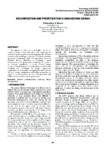
|
Decomposition and Prioritization in Engineering Design
Brown, Christopher A.
6th International Conference on Axiomatic Design, 2011
The objective of this work is to facilitate the use of axiomatic design in two ways. One is by improving the understanding of the process of decomposing with thematic characterization and design taxonomies. The other is through appropriate prioritization within decompositions. These are important because difficulties in developing a good decomposition, and appropriately prioritizing the elements, are common impediments to using axiomatic design effectively. Good hierarchical decompositions are essential for describing and developing the design. Appropriate prioritization can be important for applying the first axiom. In addition, thematic categorization and design taxonomies can expedite the development of new decompositions and facilitate the reuse of previous decompositions.
|
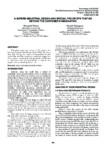
|
A Superb Industrial Design Has Special FRs or DPs That Go Beyond the Customer’s Imagination
Nakao, Masayuki, Satoshi Nakagawa
6th International Conference on Axiomatic Design, 2011
This paper reports our analysis of 475 products that have won the Japan Good Design Award (GDA). The results show that 20% of the award winning products included special FRs and DPs beyond the consumer’s imagination. These products need to keep their special FRs and DPs free of interference with other general FRs to maintain their popularity for an extended period of time.
|
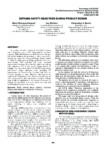
|
Defining Safety Objectives During Product Design
Ghemraoui-Lagord, Rima, Luc Mathieu, Christopher A. Brown
6th International Conference on Axiomatic Design, 2011
In previous research, a systematic method for humansafety integration early in the design process has been proposed. Called IRAD (Innovative Risk Assessment Design), this method facilitates the generation of safety requirements through past experience analysis and design choices analysis all along the design process. Design parameters thus result simultaneously from technical and safety functional requirements. This paper deals with the problem of defining safety objectives early in the product design process. It highlights the mechanism offered by IRAD for generating non-technical design objectives when preparing the requirements and constraints list. It shows that there are different typologies of safety objectives depending on the evolution of the product. In fact, there is a specific type of safety objective to be taken into account in a specific design stage. Finally, the applicability of the method is demonstrated through the application to a water faucet case study and mechanical person-machine interfaces.
|
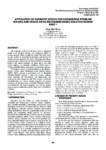
|
Application of Axiomatic Design for Engineering Problem Solving and Design Using Mechanism-Based Solution Design: Part 1
Moon, Sung-Dai
6th International Conference on Axiomatic Design, 2011
All companies wish to avoid issues such as expensive recalls, costly product reworks, and unexpected delays in product releases. Major contributing factors for these issues are the inability to troubleshoot problems and the lack of decision-making processes in design. Under present design processes such as Design for Six Sigma (DFSS) or Axiomatic Design (AD), design engineers are often left to deal with crucial requests in uncertain conditions, which make it difficult to predict failure mechanisms and customer demands. This paper proposes a different method in the decisionmaking process called Mechanism-based Solution Design (MSD). MSD proposes a transparent way to determine “Desired Results” through a three step process: defining issues, analyzing the mechanisms, and determining the solutions in every domain in AD. This process is ideal for troubleshooting and design because designers can reduce ambiguity and iteration easily with MSD. Therefore, MSD is an essential tool for design engineers who want to achieve design creativity and positive results when faced with difficult problems. |
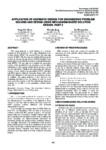
|
Application of Axiomatic Design for Engineering Problem Solving and Design Using Mechanism-Based Solution Design: Part 2
Moon, Sung-Dai, Woo-Jin Jung, Jin-Woong Kim
6th International Conference on Axiomatic Design, 2011
This paper proposes a novel solution to a standing problem in LCD panels for TVs using Mechanism-based Solution Design (MSD). The research follows the three-step process of MSD. The first step was to define all issues in the process. In this step, the gap analysis of MSD revealed a “high current pinhole” problem in the external electrode fluorescent lamp (EEFL). The next step was to analyze the mechanism process, which revealed the core parameters and the failure mechanism of high current pinhole failures through a set up and test hypotheses. Finally, in the determining the solutions process, a novel solution was provided to EEFL back light unit (BLU) pinhole failure by Axiomatic Design (AD), which led to the validation of the design by an accelerated life test. In addition, this paper proposes a new approach for engineering problem-solving and design in order to more easily access the solutions in AD. The author hopes that more engineers will be able to solve engineering problems better using AD.
|
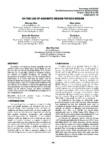
|
On the Use of Axiomatic Design for Eco-Design
Shin, Mijeong, Mina Azhar, James R. Morrison, Taesik Lee, Hyo Won Suh
6th International Conference on Axiomatic Design, 2011
Eco-design is of increasing import, especially since the decisions made in early design stages largely dictate not only the cost, but also the environmental effects, of a product. With the goal of providing guidance to engineers searching for methods to conduct eco-design, we consider the incorporation of ecological issues into the Axiomatic Design methodology. It is shown that there are natural ways to include eco-factors into every part of the design process using Axiomatic Design. Once we provide logical justification for the inclusion of eco-factors as functional requirements and design parameters, we proceed to demonstrate how Axiomatic Design can be used to analyze and design eco-friendly products. We conclude with a detailed design example of an eco-friendly flashlight.
|
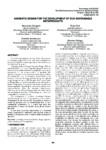
|
Axiomatic Design for the Development of Eco-Sustainable Metaproducts
Giorgetti, Alessandro, Paolo Citti, Gabriele Arcidiacono, Massimo Delogu
6th International Conference on Axiomatic Design, 2011
The eco-design approach for new product development is becoming progressively more and more important for market and legislative reasons especially in advanced markets (EU USA, East Asia, etc.). This paper analyzes through Axiomatic Design (AD) the potential capability of the meta-product approach connected with the use of a tailored Smart Eco-design Platform, for the improvement of the eco-sustainability of products. The approach, proposed by the authors to eco-design, introduces the meta-product level (or Functional System level) as the reference level for detecting and developing the optimal design through the use of AD. The first axiom aims to define the Design Matrix of the Functional System in order to detect its best configuration. The purpose is to avoid an optimization without appropriate knowledge in terms of interaction metaproduct- resources. Then the Functional Requirements definition, used in AD, could represent the ideal index for the ease of sharing information and knowledge on a wide scale among different industrial sectors.
|

|
Axiomatic Design of an Airport Passenger Terminal
Pastor, Joan Bruno Rodríguez, Efren M. Benavides
6th International Conference on Axiomatic Design, 2011
In architectural or civil engineering problems, like the functional design of an airport passenger terminal, complexity increases when the obligatory functional aspects of the infrastructure meets customers’ needs. With the use of Axiomatic Design, this paper explores new ways of addressing the functional design problem of an airport terminal. Such buildings are characterized by the presence of a vast number of stakeholders interacting simultaneously, and whose necessities present a huge variety and variability. In such a framework, this paper shows how Axiomatic Design becomes optimal in order to find the minimum set of functional requirements that establish the basic topology of a passenger terminal at a small Spanish tourist airport.
|
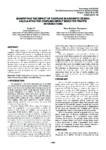
|
Quantifying the Impact of Coupling in Axiomatic Design: Calculating the Coupling Impact Index for Traffic Intersections
Yi, Yoojin, Mary Kathryn Thompson
6th International Conference on Axiomatic Design, 2011
This work proposes a new method to quantify the coupling in hybrid design matrices for traffic intersections by taking into account the presence of coupling, the types of conflict that coupling may introduce, and the impact that the conflict may have on the intersection. The result is a single numerical value, called the coupling impact index, which can be used to select the safest intersection design for a given situation. This technique is demonstrated with a case study which calculates the coupling impact index for three traffic intersections based on two sets of traffic conditions and suggests the best intersection for the anticipated traffic volumes provided.
|
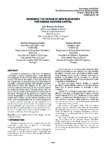
|
Designing the Design of New Businesses for Raising Venture Capital
dos Santos, João Patricio, Antonio Goncalves-Coelho, Antonio Mourao
6th International Conference on Axiomatic Design, 2011
Innovation is recognized as a key factor for increasing productivity of existing companies and is a major driver for the development of new businesses offering high added-value products and services. The authors of this paper believe that new ventures based on innovative ideas have more chance of succeeding in obtaining financing when carefully designed to meet investors’ needs. The objective of this paper is to propose a platform for the design of new businesses oriented for venture capital fund raising. Axiomatic Design (AD) was found to be very useful in approaching the financial issues of innovation. The design of this platform was based on three sources: the principles of AD, empirical knowledge from the venture capital practise, and the literature concerning to the matter, where the independence of factors does not appear as a question and the financing has not considered as a functional requirement since the outset. The platform is being tested in real world cases, and the results attained so far could be described as promising. However, one should notice that the use of this platform is not a sufficient condition for a successful venture capital fund raising project.
|
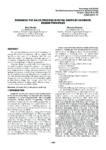
|
Designing the Sales Process in Retail Shops by Axiomatic Design Principles
Sheikh, Reza, Morteza Nazemi
6th International Conference on Axiomatic Design, 2011
Any successful business understands the importance of process. Successful sales processes will be designed and applied to each aspect of a business. With the ever competitive world of retail getting increasingly aggressive in an economy heading downward, attention to every detail is a must in an attempt to get an edge on the opposition. Axiomatic design is a scientifically based design theory that guides designers through the process of first mapping customer needs into functional requirements, then mapping these requirements into design parameters, and then finally figuring out processes to provide those design parameters. We use these principles to design Sales Processes in retail stores, and claim that this methodology will improve sales operations. We provide a detailed description of the methodology applied to Sales Process design. Our findings indicate that the methodology works well in improving Sales Process because it eliminates many non-value-added activities.
|
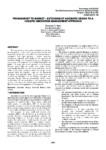
|
From Market to Market – Extension of Axiomatic Design to a Holistic Innovation Management Approach
Matt, Dominik T.
6th International Conference on Axiomatic Design, 2011
The success rate of new products and services can only be increased by a strict orientation to future markets and respectively the (future) stakeholders’ and customers’ benefit perception. This paper presents a holistic innovation management approach which builds on the principles of Axiomatic Design and Axiomatic Complexity Management and extends the concepts to a cyclic model “From Market to Market”. It starts from a new approach in the Customer Domain which helps to predict new market trends, systematically identifies customer needs, and shows how to define on this basis a consistent vision and strategy for the company (from the high-level targets to the lower-level strategies). This approach, based on the combination of different methodologies like the Delphi techniques and Axiomatic Design, aims to systematically identify share- /stakeholders and customer’s benefits and requirements. An example taken from the durable goods industry helps to illustrate the successful application of this approach.
|
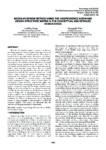
|
Modular Design Method Using the Independence Axiom and Design Structure Matrix in the Conceptual and Detailed Design Stage
Hong, Eul-Pyo, Gyung-Jin Park
6th International Conference on Axiomatic Design, 2011
Recently, the modular design of products has become increasingly popular in modern engineering design because of the various benefits of modular products. These benefits include reduced cost, rapid product development and reduced production time. However, in many cases, the modules might have contradictions from the viewpoint of the Independence Axiom because the modules are defined based on the physical relationships among components of the product. On the other hand, modules which do not have contradictions can be defined using axiomatic design theory but the physical relationships are not considered in this case. The modules, therefore, may need additional treatment to implement in real product design because the physical relationships among components are important in real product design. To overcome the difficulty of modular design, a new design method is proposed to design a modular product based on relationships among functional requirements (FRs) and physical relationships among design parameters (DPs) of the product. Axiomatic design and the design structure matrix (DSM) are efficiently combined in the proposed method. FRs and DPs are defined based on the Independence Axiom of axiomatic design and the zigzagging process of axiomatic design is employed for the decomposition of FRs and DPs. After the decomposition, modules are defined using DSM to modularize the DPs at the bottom level of the zigzagging process. A design example is demonstrated to validate the proposed method. The results are discussed and the usefulness of the proposed method is presented.
|
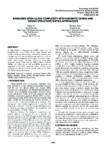
|
Managing Intra-Class Complexity with Axiomatic Design and Design Structure Matrix Approaches
Zhen, Li, Derrick Tate
6th International Conference on Axiomatic Design, 2011
In Object-Oriented Programming (OOP), classes play an important role as they model the real world through their attributes (features) and methods (behaviours). However, few attempts have been made to help manage complexity within a class (intra-class complexity). In this paper, the authors define, model and manage intra-class complexity using both Axiomatic Design (AD) and the Multiple-Domain Matrix (MDM). By combining the AD and MDM approaches as suggested in this paper, complexity within a class can be managed, and class performance can be improved with little additional effort for developers.
|
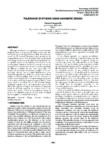
|
Tolerance Synthesis Using Axiomatic Design
Campatelli, Gianni
6th International Conference on Axiomatic Design, 2011
This paper introduces a new approach based on Axiomatic Design to simplify the process of Tolerance Synthesis. The main advantage of this approach is that all of the information needed for the Tolerance Synthesis is easily included in the classical AD framework. The information that must be stored in the design matrices is mainly related to the production cost vs. tolerance curves and the tolerance chain needed for the synthesis phase. Tolerance Synthesis is currently one of the most proficient ways to reduce the cost of machined parts but its diffusion is limited by two main issues. First, the information needed for the synthesis is complex and difficult to manage. Second, there is a cultural limit because often a concurrent approach is not fully used, especially by small and medium enterprises (SMEs), and often the tolerances are decided by the designers while the manufacturing process (and so the cost) is chosen by the process engineer. Both of these issues could be solved by the use of Axiomatic Design resulting in a greater use of such approaches, especially for SMEs. The approach developed here introduces a cross level matrix to effectively represent the tolerance chain of the product and the idea to store the cost-tolerance function as terms of the DPs-PVs design matrix. The model developed has been applied to an industrial case study.
|
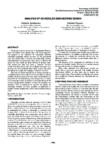
|
Analysis of Scheduled Engineering Design
Arcidiacono, Gabriele, Fabrizio Visconti
6th International Conference on Axiomatic Design, 2011
This paper concerns the analysis of Engineering Planning times for a Direct Fired Heater using a Six Sigma approach. The purpose is the validation of congruency between scheduled engineering design activities and the performed ones. The analysis aims to discover the relationship between scheduled times and performed ones, trying to discern the causes that may create any delay/advance in delivery dates. This because any delay may create a “reactive” Over-Run (where Over-Run means every extraordinary time spent by a resource over his established labour time), or that may cause the delivery to be early, thus creating a “forecast” Over-Run. Since the Six Sigma methodology is strongly focused on an analytical approach in order to resolve any kind of problem attacking the route-causes, this paper shows the flexibility and the power of the methodology, even though this is a study (not a complete project), to achieve a better knowledge of the process (planning times activities), by means of numerical and statistical tools. In particular to improve the design of scheduling activities, the paper describes an application of Quality Function Deployment (QFD) and Axiomatic Design (AD)
|
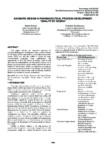
|
Axiomatic Design in Pharmaceutical Process Development: “Quality by Design”
Schurr, Stefan, Gabriele Arcidiacono
6th International Conference on Axiomatic Design, 2011
This paper outlines an innovative approach to pharmaceutical process development using advanced Design for Six Sigma (DFSS) supported by a knowledge management system. DFSS has been the toolkit of choice for many pharmaceutical companies when implementing the requirements of ICH Q8 Quality by Design. Here we will show how the Independence and Information Axioms and a Design Knowledge Matrix can be used to optimize the use of Design Of Experiments (DOE) and minimize risk, merging some of most innovative tools of the Design For Six Sigma toolbox to ensure patient safety while maintaining maximum flexibility for continuous process optimization.
|
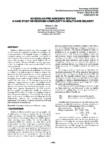
|
Scheduling Pre-Admission Testing a Case Study on Reducing Complexity in Healthcare Delivery
Oh, Hilario L.
6th International Conference on Axiomatic Design, 2011
Healthcare delivery in today’s hospitals is a complex task. A major source of complexity comes from the coupling of the various operations in the hospital. Because of coupling, any attempt to optimize one function would be at the expense of other functions. The consequence is a complex, sub-optimal system. Thus, to arrive at an optimized healthcare delivery system, we need to identify and resolve the couplings present so that the complexity of the system may be reduced and the system optimized.
|
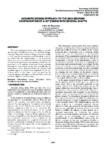
|
Axiomatic-Design Approach to the Main-Bearing Configuration of a Jet Engine with Several Shafts
Benavides, Efrén M.
6th International Conference on Axiomatic Design, 2011
The best configuration for the main bearings of a multishaft jet engine is studied by means of the Axiomatic Design. This paper shows how Axiomatic Design reduces the number of initial possible solutions from several hundreds to one. It also shows how the implementation of the Information Axiom as an initial customer’s need affects the formulation of the functional requirements and constraints, and hence the generation of a final solution. Information Axiom is used for screening the best solution among those prescribed by the Independence Axiom. Current solutions for three-shaft and two-shaft engines are discussed and compared with the best solution, which in this context is the one given by the axiomatic approach. This paper also discusses how constraints may lead to slightly different solutions.
|
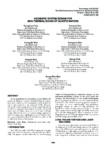
|
Axiomatic System Design for Non-Thermal Dicing of Quartz Wafers
Han, Seunghwoi, et al.
6th International Conference on Axiomatic Design, 2011
In the manufacture of light emitting diodes (LEDs), the process of dicing that separates fabricated chips into pieces from quartz wafers is critically important as it determines the quality and productivity of produced LEDs. However, traditional methods using either mechanical grinding wheels or relatively long pulse lasers suffers mechanical or thermal defects such as debris, cracks, heat-affected zone and large dicing width. In this work, an axiomatic design approach is used to develop a novel high-brightness wafer dicing machine that allows minimized mechanical thermal effects with the aid of ultrafast femtosecond laser pulses.
|
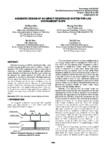
|
Axiomatic Design of an Impact Resistance System for LNG Containment Ships
Kim, Ki-Hyun, et al.
6th International Conference on Axiomatic Design, 2011
Liquefied nitrogen gas (LNG) containment ships must provide cryogenic reliability and safety for at least 40 years of operation. The LNG containment system on these ships is composed of metal membrane as a barrier and insulation panels. Recently, it has been found that the barrier systems can be damaged by impact pressure of LNG due to the generation of cavitation in containment. The impact pressure, which is higher than 1 MPa, with a duration less than a few ìs, can induce deformation of the metal membrane as well as damage the insulation panels. However, in conventional designs of LNG containment systems, this problem was hard to overcome due to the coupled nature of system. Therefore, in this study, the axiomatic design approach was employed to develop a new impact resistance system for LNG containment ships.
|
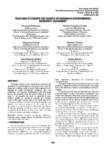
|
Teaching Students the Basics of Designing Experimental Research Equipment
Slatineanu, Laurentiu, et al.
6th International Conference on Axiomatic Design, 2011
This paper presents some considerations concerning the application of axiomatic design in research. In such a case, the researcher sometimes needs to quickly find equipment that is adequate to certain experimental conditions; thus, the researcher is both customer and designer. On the other hand, because the researcher must give creative solutions to some stages of the research, he could be interested in using methods capable of stimulating technical and scientific creativity. This paper discusses some of the results obtained in a Romanian technical university concerning the possibility to stimulate the students’ creativity. A case study of the application of axiomatic design in order to develop a device for electrical discharge machining of curvilinear axis holes is also presented; this device was needed in a study in the field of non-conventional machining technologies.
|
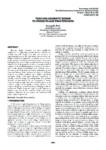
|
Teaching Axiomatic Design to Students and Practitioners
Park, Gyung-Jin
6th International Conference on Axiomatic Design, 2011
Recently, design education has been significantly emphasized in engineering schools because students can develop not only design skills but also creativity, an engineering philosophy, the right attitude for teamwork, etc. Design education is emphasized in industry as well. In the design courses, students or practitioners mostly carry out a team project for some design example and brainstorming is utilized in the thinking process. Generally, a specific method is employed in the detailed design process. However, they do not usually utilize design methodologies with a definite form in the conceptual design process. Instead, brainstorming and discussion between team members are adopted. Axiomatic design is an excellent candidate for a design method for conceptual design. This paper discusses experiences in teaching axiomatic design to undergraduate and graduate students and practitioners. In the undergraduate course, axiomatic design is taught and a team project is given to use axiomatic design. In the graduate course, students learn axiomatic design as a method for conceptual design while the methods of detailed design are taught as well. Engineers in industry learn how to use axiomatic design when facing problems. Syllabuses of the courses are introduced and project topics are presented.
|